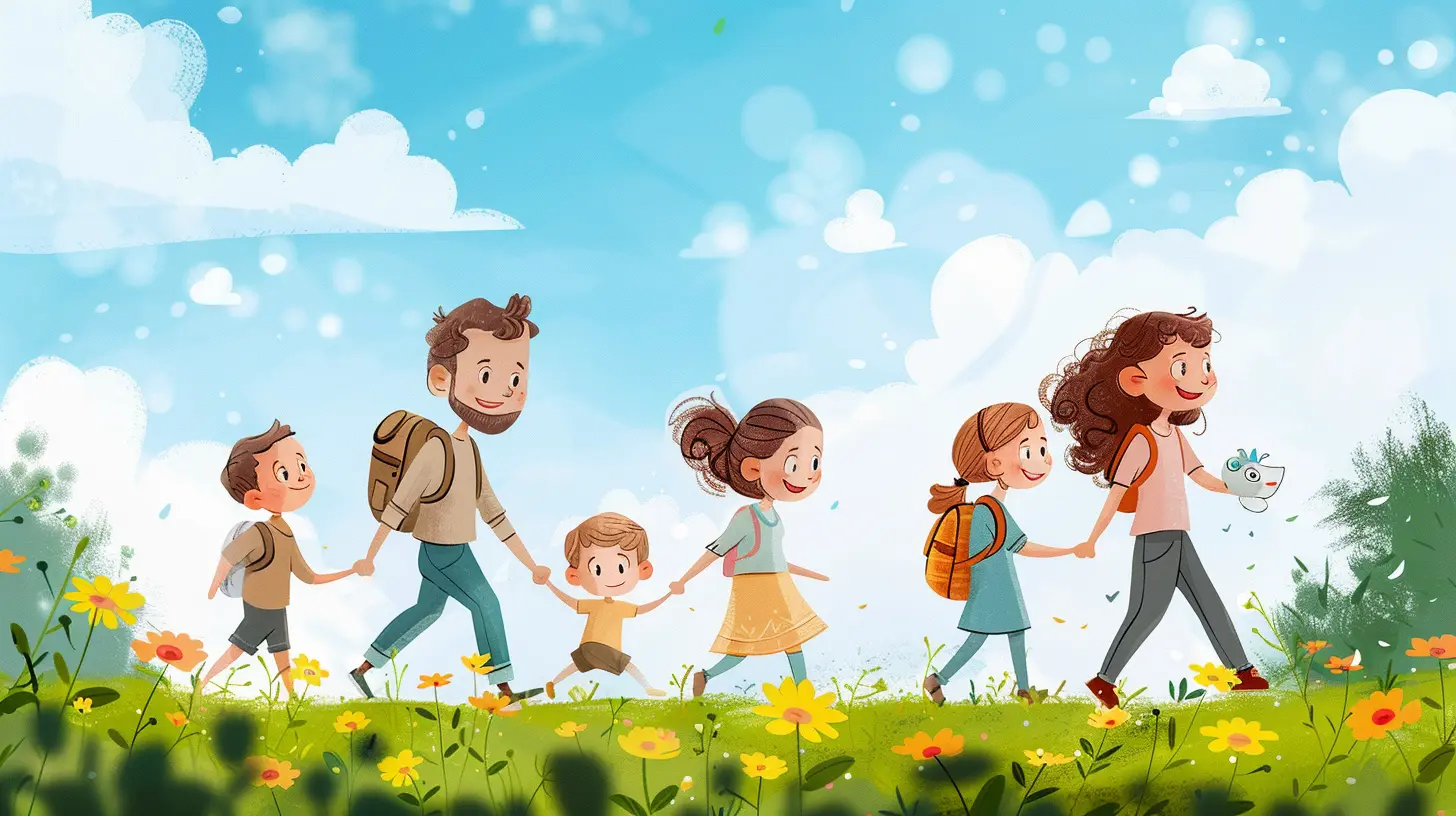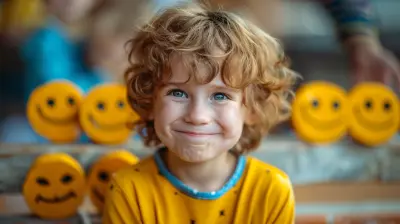Navigating Age Gaps: Bridging the Divide Between Older and Younger Kids
23 May 2025
Parenting is a rollercoaster ride. Just when you think you’ve got the hang of it, life throws another loop into the mix. If you’re a parent with kids who have a few (or many) years between them, you know exactly what I’m talking about. Having children at different stages in life can be a blessing, yes, but it also comes with its unique set of challenges.
How do you keep everyone happy when your toddler wants to play with Duplo blocks while your preteen craves screen time? Or when your teen rolls their eyes at the idea of a family movie night because the little ones insist on watching Frozen for the hundredth time? It can feel like you’re juggling fireballs some days.
But you’re not alone. Many parents face the challenge of bridging the divide between older and younger kids. The key? Understanding the age gap dynamics and fostering positive relationships between siblings of different ages. Let’s break it down.

Understanding The Age Gap Dynamics
Different developmental stages can create a natural divide between siblings. For example, a 3-year-old and a 12-year-old are in worlds that are miles apart. The younger child might be learning to navigate their emotions, still living in a world of imaginative play, while the older sibling is dealing with schoolwork, friendships, and maybe even the beginnings of adolescence.The Emotional Gap
The emotional maturity of a child at different ages is something to consider seriously. A younger child may not be able to comprehend the emotions or needs of an older sibling, and vice versa. This often leads to frustration on both ends.The older child may feel burdened by the attention the younger needs, and the younger may feel left out or ignored during ‘big kid’ activities. This natural emotional disconnect can cause tension at home, but it’s not something you can’t manage.
The Physical Gap
Let’s not forget about sheer physical capabilities! The activities a 5-year-old might thrive on (like running around the playground or playing tag) might seem boring or too childish for a 15-year-old. Conversely, a 15-year-old’s interests (like fashion, social media, or basketball) might be way over little Johnny’s head.It’s not just about age; it’s about the activities that match their physical and mental capabilities. When parents understand this, they can step in with solutions tailored to everyone’s needs.

Common Challenges of Sibling Age Gaps
Now that you've got a peek into the emotional and physical aspects, let's lay out some real-life scenarios that might sound familiar:1. Jealousy and Favoritism
One common issue that parents face when there’s a significant age gap is jealousy. The older child might feel neglected when the younger one demands more attention. And let’s be honest, younger kids do tend to need more hands-on care—whether it’s helping with homework, bathing, or bedtime routines.This can lead older kids to feel as though they're pushed to the sidelines, which can sometimes morph into feelings of jealousy or believing that the younger kid is the ‘favorite’ in the family. It’s a tricky situation to navigate, but being aware of this dynamic means you can take steps to reassure both parties.
2. Shared Interests (Or Lack Thereof)
It’s no secret that a teenager and a toddler have very different tastes. Finding activities that spark joy for both can be like finding a needle in a haystack. While your older child might want to watch a Marvel movie, the little one might prefer a cartoon like Paw Patrol.This lack of common ground can result in arguments or feelings of exclusion. The older sibling might get annoyed by what they see as "kid stuff," and the younger might feel lost or left out during "grown-up" activities.
3. Sibling Rivalry
When there’s a noticeable age gap, sibling rivalry can take on a slightly different form. Rather than bickering over toys or screen time (although that happens too), the rivalry can focus more on attention. The older child may feel like they’ve lost the spotlight after the younger sibling arrives. And this can cause resentment, which, if left unchecked, can build over time into negative behaviors.4. Parental Guilt Over Divided Attention
As parents, we often feel like we’re being pulled in two (or more) directions. How do you give each child the attention they need when their needs are so different?You’re not alone if you feel guilty for spending more time with younger kids because they require more supervision. You might also feel bad for asking your older child to ‘be patient’ while you attend to the little one. Balancing everyone’s needs without losing your sanity is tough, but it’s not impossible.

Strategies for Bridging the Gap
Thankfully, there are ways to help close the divide. With a bit of creativity and patience, you can foster strong bonds between siblings despite the age difference.1. Encourage Teamwork
One way to help siblings with an age gap bond is by fostering teamwork. Give them joint tasks that require cooperation. For example, an older child could help their younger sibling with a Lego build, or they could team up to bake cookies under your supervision.When they work together on something, they start to form a mutual understanding. It also helps the younger child look up to their older sibling as someone they can depend on, while the older child gets a chance to take on a nurturing role.
2. Quality One-on-One Time
Ensure that you’re carving out time to spend with each child individually. This can help alleviate jealousy or feelings of neglect. It doesn’t have to be a huge time commitment—even 20 minutes of uninterrupted one-on-one attention can make a big difference.You could play a quick game with your younger child or watch an episode of your older child’s favorite show. The goal is to make sure each child feels seen, heard, and valued.
3. Find Shared Interests
Yes, they may love different things, but that doesn’t mean you can’t find some overlap. Sometimes, the age gap gets blown out of proportion because we don't think outside the box.It might take a little creativity, but try to find activities they can both enjoy—like interactive games (think Wii sports), a family board game, or outdoor activities like a hike where age doesn't hinder participation. You can even create special traditions that both kids will look forward to, such as family movie nights where alternate movie selections, ensuring both kids have their share of favorites.
4. Set Clear Boundaries and Expectations
Older kids may have more responsibilities, but that doesn't mean they should be expected to babysit or always cater to the younger sibling's needs. Setting clear boundaries helps each child understand their roles—and ensures they feel respected.For example, make sure older kids have their own space where they can retreat and don't always have to entertain the younger sibling. This gives them the freedom and independence they often crave, without feeling suffocated.
5. Use Positive Reinforcement
When you notice acts of kindness or cooperation between siblings, highlight and celebrate them. Did the older sibling share their game or help the younger one tie their shoes? Praise it! Positive reinforcement can go a long way in bridging the gap.You can even implement a reward system where they earn tokens (or points) for activities they do together (peacefully!). Once they collect a certain number, they can trade them in for a reward, like choosing a family outing or a special treat.
6. Teach Empathy
Empathy is a big one, and it applies to both kids. Help your older child understand why their younger sibling may need extra attention from time to time. Likewise, help the younger child recognize that their older sibling is dealing with bigger responsibilities, like school, extracurriculars, and friendships.Role-playing is a great tool to teach both kids how to step into each other’s shoes. This not only fosters empathy but helps each child appreciate where the other is coming from, which reduces the chance of resentment building over time.

Why It’s Worth The Effort
At the end of the day, the effort you put into fostering a positive relationship between siblings is worth it. Siblings often become some of the closest people in our lives, and despite any age gaps, they can grow up to be lifelong friends. It’s a bond that, when nurtured well, can last a lifetime.By investing time, energy, and love into helping your kids understand each other, you’re giving them a gift—one that will serve them both in childhood and adulthood. It's not about forcing them to spend every waking moment together, either. It's about creating moments of connection, however small, that will eventually turn into cherished memories.
Final Thoughts
Navigating age gaps between siblings can feel like walking a tightrope some days, but it’s not an impossible feat. By staying patient, fostering teamwork, and paying attention to each child’s needs, you can bridge the divide. In return, you’ll help them build a strong foundation based on mutual respect, love, and a shared family bond that, with time and nurture, will only grow stronger.Let’s face it: sibling relationships are complicated no matter the age gap. But they are also one of the most rewarding parts of parenting. When you make the effort to bridge the divide, you’re not just solving problems for now—you’re building a lasting connection between your kids for the future.
all images in this post were generated using AI tools
Category:
Sibling RivalryAuthor:

Austin Wilcox
Discussion
rate this article
3 comments
Sophia McGrath
What an intriguing topic! I'm curious how parents manage different developmental needs and interests between siblings. Any tips for fostering connection in diverse age groups?
June 9, 2025 at 2:47 PM

Austin Wilcox
Thank you for your interest! To foster connection between siblings of different ages, consider collaborative activities that cater to varying skill levels, such as family games or art projects. Encourage shared responsibilities and open communication to help them appreciate each other's unique perspectives and strengths.
Jacob Daniels
This article offers valuable insights on fostering connections between siblings of different ages, promoting understanding and collaboration through shared activities and communication.
June 7, 2025 at 3:33 AM

Austin Wilcox
Thank you! I'm glad you found the insights helpful in fostering sibling connections across age gaps.
Knox Rogers
Great tips for managing sibling dynamics effectively!
June 3, 2025 at 2:56 AM

Austin Wilcox
Thank you! I’m glad you found the tips helpful for managing sibling dynamics!



